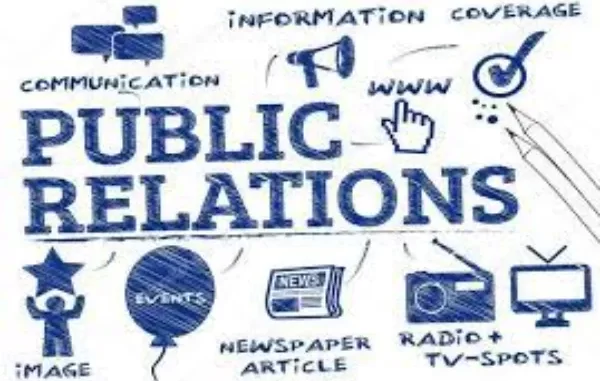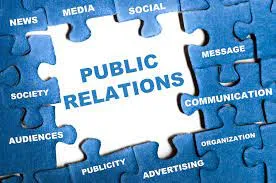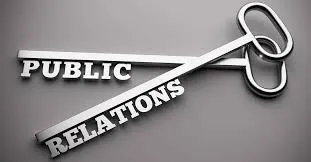
Public relations (PR) is a dynamic field that revolves around building and managing relationships between organizations, individuals, and their various publics. PR professionals work to create and maintain a positive public image for their clients or employers. This involves crafting compelling narratives, disseminating information, and engaging with the media, stakeholders, and the public to influence perceptions and opinions.
What Is Public Relations?
Public relations (PR) is the strategic practice of managing the spread of information between an organization and its publics. In essence, it’s about cultivating a desired public image and influencing public perception. PR professionals employ a variety of tactics to achieve this, such as crafting press releases, managing social media presence, organizing events, and responding to media inquiries.
The goal? To establish and maintain positive relationships with various stakeholders, including customers, employees, investors, and the general public. Effective PR builds trust, fosters brand loyalty, and helps organizations navigate potential crises by shaping the narrative and mitigating negative publicity. It’s a crucial aspect of building and maintaining a strong reputation in today’s information-driven world.
The Different Types of Public Relations
Public relations isn’t a one-size-fits-all operation. Many PR firms and departments specialize in distinct areas, each wielding a targeted toolkit to address specific communication needs. Here’s a breakdown of some key PR specializations:
- Media Relations: Building strong ties with media outlets is the cornerstone of this area. PR professionals here act as liaisons, proactively pitching stories to journalists, providing accurate information, and making company representatives available for commentary.
- Production Relations: This department serves as a bridge between PR and a company’s internal operations. Their focus lies in supporting marketing initiatives, particularly for product launches, special campaigns, or major product changes.
- Investor Relations: The trust and confidence of investors are paramount. Investor relations specialists manage communication with this critical audience, organizing investor events, overseeing financial report releases, and addressing investor concerns.
- Internal Relations: Effective communication isn’t confined to external audiences. Internal relations specialists foster a positive work environment, address employee concerns, and mediate issues to prevent public spillovers.
- Government Relations: Navigating the world of government regulations and policies requires a specialized touch. Government relations professionals act as a bridge between companies and policymakers, providing feedback, advocating for specific stances, and ensuring fair treatment.
- Community Relations: Building positive relationships within specific communities – whether geographically defined or a niche group – is the core focus here. Community relations specialists tailor communication strategies to resonate with the values and interests of these targeted communities.
- Customer Relations: Customers are the lifeblood of any organization. Customer relations specialists nurture these key relationships, conduct market research to understand customer priorities, and address any major concerns that may arise.
By employing specialists in each of these areas, PR firms and departments can craft comprehensive communication strategies that reach all the right audiences and achieve organizational goals.
The Basics of Public Relations: What You Need to Know
Public Relations (PR) is a form of communication between an organization and its publics. It is focused on creating and maintaining a positive image for an organization, product, service, or individual. PR professionals work to build relationships and create public opinion to help an organization reach its goals.
To be successful in PR, it is important to understand the fundamentals. Here is a brief overview of the basics of public relations:

Media Relations: Media relations is the practice of building relationships with the media to garner attention and coverage for an organization. PR professionals are responsible for creating press releases, pitching stories, and responding to media inquiries.
Crisis Management: Crisis management is the practice of responding to and managing negative publicity. It involves anticipating and preparing for potential issues, developing a plan for how to handle them, and executing the plan.
Content Creation: Content creation is the process of creating materials such as blogs, articles, videos, and social media posts to share with the public. Content should be tailored to the target audience and provide useful and relevant information.
Social Media Management: Social media management involves creating and executing a strategy to engage with the public on social media platforms. This includes creating content, responding to comments, and monitoring conversations.
Public Speaking: Public speaking is the practice of speaking in front of an audience to inform, persuade, or entertain. PR professionals must be able to speak confidently and effectively in order to communicate an organization’s message.
Research and Evaluation: Research and evaluation are essential components of PR. Research involves gathering information about an organization’s target audience, competitors, and other relevant topics. Evaluation involves analyzing the data to measure the effectiveness of PR tactics.
These are just a few of the basics of public relations. PR professionals must also be creative, organized, and have strong interpersonal skills in order to be successful.
How to Leverage Public Relations for Maximum Impact
Public relations (PR) is an important tool for businesses to raise awareness and generate interest in their products and services. Leveraging PR for maximum impact can help a company reach its goals, build a positive reputation, and create lasting relationships with its customers. Here are some tips for leveraging PR for maximum impact.

- Develop a Strategic Plan: The first step to leveraging PR is to develop a strategic plan. This plan should cover the overall goal of the PR program, the target audience, the key messages to be communicated, and the channels to be used. Additionally, the plan should include a timeline, budget, and actionable steps to ensure success.
- Create Engaging Content: Content is crucial for effective PR, and it should be engaging and interesting to the target audience. Content should be tailored to the audience’s interests and should be timely and relevant. Additionally, it should be creative and include multimedia elements, such as videos and podcasts.
- Utilize Multiple Channels: To reach the widest possible audience, businesses should utilize multiple channels for their PR efforts. This includes traditional media outlets, such as newspapers and television, as well as digital and social media channels.
- Monitor Results: It is important to measure the success of PR efforts to ensure that they are reaching the desired goals. This can be done by tracking website traffic, analyzing media coverage, monitoring social media engagement, and measuring customer feedback, among other metrics. By following these tips, businesses can leverage PR for maximum impact and reach their goals. With a strategic plan, engaging content, multiple channels, and monitoring, businesses can build a positive reputation and create lasting relationships with their customers.
The Benefits of Having a Quality Public Relations Team
Public relations (PR) is an essential part of any organization or business. A quality PR team can provide an array of benefits to an organization, from increasing brand recognition to improving customer relationships. Here are some of the key advantages that having a quality public relations team can bring to any organization.
First, a quality PR team can help an organization build and maintain relationships with its customers. A well-crafted PR strategy can help an organization reach out to its customers and develop a strong emotional connection. This in turn can lead to increased customer loyalty and support for the organization.
Second, a quality PR team can help an organization build a positive reputation in the marketplace. A well-crafted PR strategy can help an organization gain favorable media coverage, as well as increase visibility and recognition for the organization’s products and services.

Third, a quality PR team can help an organization create a unique brand identity. A well-crafted PR strategy can help an organization establish a distinct image in the minds of customers, and create a strong and lasting impression in the marketplace.
Finally, a quality PR team can help an organization manage any negative publicity or crises. A well-crafted PR strategy can help an organization respond quickly and effectively to any negative publicity or crises, and help to minimize any damage to the organization’s reputation.
Having a quality public relations team is essential for any organization or business. A well-crafted PR strategy can help an organization build relationships with its customers, build a positive reputation, create a distinct brand identity, and manage any negative publicity or crises.
Tips for Crafting an Effective Public Relations Plan
- Identify Goals and Objectives: Before crafting your public relations plan, take the time to clearly define the goals and objectives of the plan. This will help you to ensure that the plan is focused and on track to achieving its desired outcome.
- Research: Conduct thorough research to gain a deeper understanding of the current landscape of the industry, target audience, and competitive landscape. This will help you to identify the key messages and strategies to use in order to create an effective public relations plan.
- Create a Timeline: Once you have identified the goals and objectives, create a timeline for executing the plan. A timeline will help you to stay organized and on track to achieve the desired outcome.
- Identify Your Audience: Understanding who your target audience is will help you to create messages and strategies that resonate with them. It is important to identify the demographic, interests, and pain points of your audience in order to create an effective plan.
- Develop a Measurement Plan: Once you have identified the goals and objectives, create a plan for measuring the success of the public relations plan. This will help you to gauge whether or not the plan is successful and if adjustments need to be made.
- Utilize Different Tactics: Public relations plans should utilize multiple tactics and channels in order to reach a wider audience. This includes traditional media, digital media, and social media.
- Monitor Progress: Monitor the progress of the plan regularly in order to ensure that the objectives are being met. This will help you to make any necessary adjustments to ensure that the plan is successful. Following these tips will help you to craft an effective public relations plan that is focused, organized, and on track to reaching its desired goals and objectives.
The Power of Strategic Public Relations: How to Get Results
The power of strategic public relations is a tool that can help organizations, businesses, and individuals to promote their brand and to achieve their desired outcomes. It can be used to generate publicity, increase visibility, and create a positive public image. Strategic public relations is an important part of any successful marketing plan.

By utilizing strategic public relations, organizations and individuals can create a positive message that will be heard by their target audience. The message should be carefully crafted and strategically placed to get the desired results. This message should be tailored to the target audience and should be based on the goals of the organization or individual.
Through strategic public relations, organizations can reach their desired audience by using various avenues such as press releases, media relations, website content, social media, and more. Press releases are an effective way to reach the media and the general public and can be used to announce events, new products, and other information. Media relations involve interacting with reporters and editors to increase visibility of the organization or individual. Social media is another effective way to reach an audience and can be used to engage with customers, build relationships, and create a positive public image.
Organizations can also use strategic public relations to create a positive impression in the minds of their target audience. This can be done by creating content that is both informative and entertaining and by using visuals that will grab the attention of the audience. It is also important to ensure that the content is consistent with the organization’s brand values and goals.
Examples of Public Relations
Public relations campaigns come in all shapes and sizes, but some truly shine. Here are a few examples that showcase the power of PR:
- Dove’s “Real Beauty” Campaign: This long-running campaign challenged narrow beauty standards by celebrating diverse women and promoting body positivity. Through powerful imagery and social media engagement, Dove fostered a global conversation about beauty beyond size or shape, earning them a loyal following and positive brand recognition.
- Spotify’s Wrapped: This annual personalized data reveal has become a social media phenomenon. By showcasing users’ unique listening habits in a visually engaging way, Spotify transformed data into a shareable experience. This clever PR tactic generated excitement for the platform and strengthened user engagement.
- Lego’s Rebuild the World: In the wake of natural disasters, Lego mobilized its resources to create interactive rebuilding workshops for affected communities. This campaign not only provided a creative outlet for children but also showcased Lego’s commitment to social responsibility and community building, generating positive press coverage and goodwill.
These examples illustrate how effective PR goes beyond press releases. By crafting creative campaigns that resonate with target audiences and contribute positively to society, PR professionals can generate buzz, build trust, and achieve lasting success for their clients.
The Importance of Public Relations
In today’s competitive landscape, customer decisions extend beyond simply price and quality. A company’s image and the relationships it fosters play a crucial role. Negative publicity or a controversial misstep can erode trust and sever the connection customers feel with a brand. Here’s where public relations steps in, acting as a bridge between organizations and their audiences.
Effective PR cultivates a positive brand image, fostering trust and loyalty among customers, employees, investors, and other stakeholders. Through proactive communication, strategic media engagement, and crisis management strategies, PR professionals ensure a consistent and positive narrative about the organization. This translates to a more connected customer base, a more engaged workforce, and a stronger overall reputation – all vital ingredients for sustainable success in the long run.






Leave a Reply